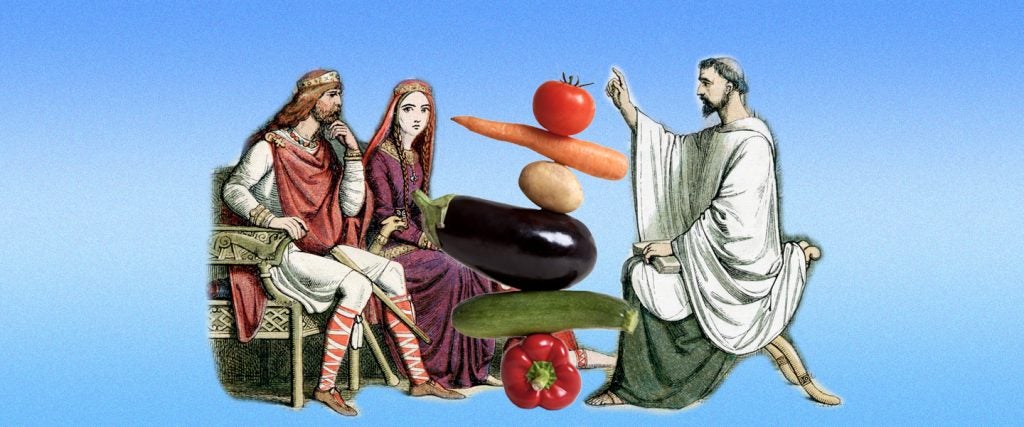The Anglo-Saxon kings were many things — famed in legend and scroll, song and tapestry and renowned for their bravery in repelling the Dane raiders and the scourge of the Northmen. They were also, as it turns out, a bunch of soy boys. That’s right, Alfred the Great was most likely a vegetarian. In fact, it was Anglo-Saxon peasants who ate meat, not Anglo-Saxon royalty.
This is according to new research out of Cambridge, the Harvard of the U.K. It started with work by bioarchaeologist Sam Leggett, who “analyzed chemical signatures of diets preserved in the bones of 2,023 people buried in England from the 5th to 11th centuries. She then cross-referenced these isotopic findings with evidence for social status such as grave goods, body position and grave orientation. Leggett’s research revealed no correlation between social status and high protein diets.”
Spurred on by this preliminary finding, she partnered with Tom Lambert, a historian at Sidney Sussex College, and together they studied medieval texts and looked for dietary journals and accounts that might shed some light on what the kings and courtesans were eating in their damp, dark castles and manors. In particular, they studied the reign of Ine, the King of Wessex (circa 688 to 726 C.E.) and focused on the calorie count of the foods consumed. They determined that medieval guests of the king could expect to be served a meal of 4,140 kilocalories, made up of beef, poultry, salmon, mutton and eel as well as bread rolls, fresh honey and ale.
You’ve likely noticed there has yet to be mention of a single vegetable. But the absence of evidence isn’t the evidence of absence. In this case, it’s quite the opposite. The absence of any mention of vegetables is likely because they were common and not worth mentioning. It was the meat feast that was unusual, extraordinary and worth recording.
As Lambert explained via press release, “The scale and proportions of these food lists strongly suggests that they were provisions for occasional grand feasts, and not general food supplies sustaining royal households on a daily basis. These were not blueprints for everyday elite diets as historians have assumed.” To further his point, he offered a personal anecdote: “I’ve been to plenty of barbecues where friends have cooked ludicrous amounts of meat so we shouldn’t be too surprised. The guests probably ate the best bits and then leftovers might have been stewed up for later.”
His barbecue-backed supposition is completely backed up by Leggett’s work. “I’ve found no evidence of people eating anything like this much animal protein on a regular basis,” she explained. “If they were, we would find isotopic evidence of excess protein and signs of diseases like gout from the bones. But we’re just not finding that.”
All of this means that the Anglo-Saxon medieval period may need to be historically reimagined. Take, for example, the concept, known in Old English, as feorm or food rent. It’s long been assumed that vassals paid their lords and kings with the harvest of their land and livestock. Basically, they kicked the good foods up to their social bettors, while they ate slop, gruel and hard loaf breads. That’s now probably incorrect. Per Lambert and Leggett’s research, the word feorm “referred to a single feast and not this primitive form of tax.”
“We’re looking at kings traveling to massive barbecues hosted by free peasants, people who owned their own farms and sometimes slaves to work on them,” Lambert clarified, again via press release. “You could compare it to a modern presidential campaign dinner in the U.S. This was a crucial form of political engagement.”
And so, it looks like the famous legend about Alfred the Great burning the cakes while he was hiding out in the swamps is less about the king humbly being the one to bake the bread and is more about the fact that he ate bread regularly. He was just a terrible baker.

